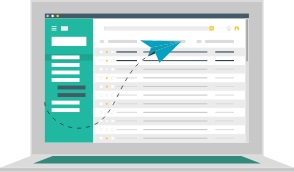Subscribe to Newsletter
Stay up-to-date with the latest tips & strategies. Get additional discounts & alerts on offers.

Email marketing has become the central part of digital marketing. Every other brand or company is into email marketing nowadays. With changing trends and the evolution of current market needs, a marketer must be up-to-date with ever-changing terminologies involved in email marketing.
Making it easy for you, we have jotted down terms from A-Z related to email marketing.

Do you know that our 100% accurate manually verified data helps you build a customized ICP?
CAN-SPAM
The Controlling the Assault of Non-Solicited Pornography and Marketing Act of 2003 from the USA, also known as the CAN-SPAM act, protects the customers from unsolicited emails, irrespective of bulk spam emails or commercial emails, from businesses.
CASL (Canadian Anti-Spam Law)
Canadian Anti-Spam Law (CASL) is an act from Canada that requires global organizations that send a commercial email within, from, or to Canada to receive recipients’ permission before sending messages.

You should be flexible enough to your audience, giving them an option to opt-out with an unsubscribe button at the end of your email.
Have you ever wondered if you need different approaches to market differently to men and women? Look no further, because we have got you sorted.
Wondering how to ace an email marketing campaign to CEOs? Get the most responsive C-level executives business database here!
Show some love!

Subscribe to Newsletter
Stay up-to-date with the latest tips & strategies. Get additional discounts & alerts on offers.
Related Articles
Subscribe to Newsletter
Stay up to date with the latest marketing, sales, and service tips and news.
Enter Your Details